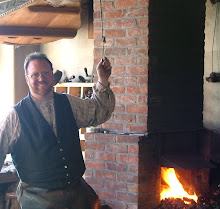
Here is a first-hand account of our adventures with the hawk from Marieanne Coursen, one of our farmers:
I saw a hawk sitting on the barnyard fence. I scolded it and it flew off only to land on the fence on the other side of the Brook barn. That night I had a terrible time getting the chickens into the henhouse. Three of them were hiding in the sheep pen and would not be chased out. I thought sure they would come out once I let the sheep in but no. I finally managed to get them out and into the henhouse. Then I had to search for the rest of the chickens. I found a few more cowering in corners but came up short of 2 of them.

On Thursday we discovered a hawk in the granary. It would not fly out. Just kept flying in the peak and did not want to come down low enough to fly through the door. I took a few pictures of it and they are attached. Isn't it ironic that a hawk got the chickens after all the trouble with the foxes and raccoons?
The hawk ended up spending 2 nights in the granary because it just would not fly out. On Thursday Ray (the trapper) caught it with a net and took it away. I wish it could have stayed because the sparrows got pretty scarce while it was around.”

We think this was a Sharp Shinned Hawk or a Coopers Hawk. If any readers are knowledgeable on the subject please reply and let us know the breed of this hawk. Just as our predecessors would in 1845 we can only respond by being vigilant and keeping the barns locked up tight at night. Hopefully this will be the end of our adventures with hungry wildlife this winter.

Without the farm animals to worry about, the red tailed hawks that call Clermont Home add a lot of beauty to our natural setting. Visitors and staff have both even spotted them carrying off prey on occassion, which is quite a site!
ReplyDeleteYour area is remarkably picturesque! Like Clermont in the Hudson Valley, Otsego lake is in a valley surrounded by higher peaks. That must create prime soaring conditions for raptors. We had a mated pair of Red Tail Hawks this summer, and see a lot of Turkey Vultures in the spring. It is great that your area is quiet enough for the hawks to feel at home! Are you on the Eagle Migration Route?
ReplyDeleteThough it is tough to determine based on the size of the pictures, I would say it is an immature Sharp-shinned hawk becasue of the mottled-banding of the feathers, the light stripe above the eye and the eyes appearing farther back on its head. We have one that regularly dines at our bird feeders.
ReplyDelete